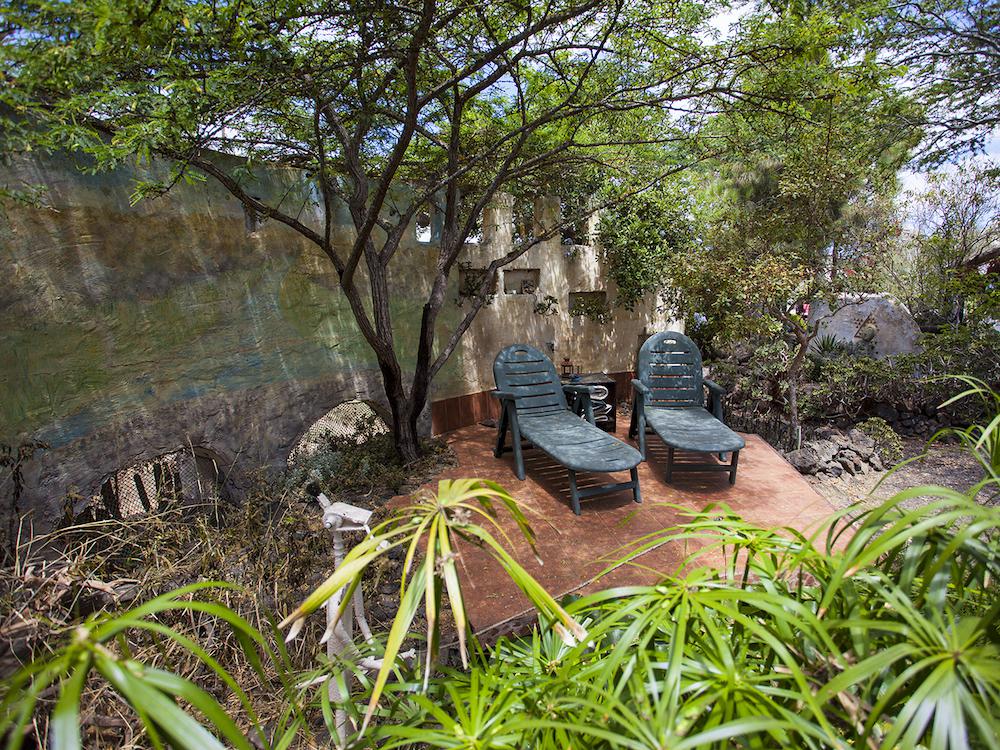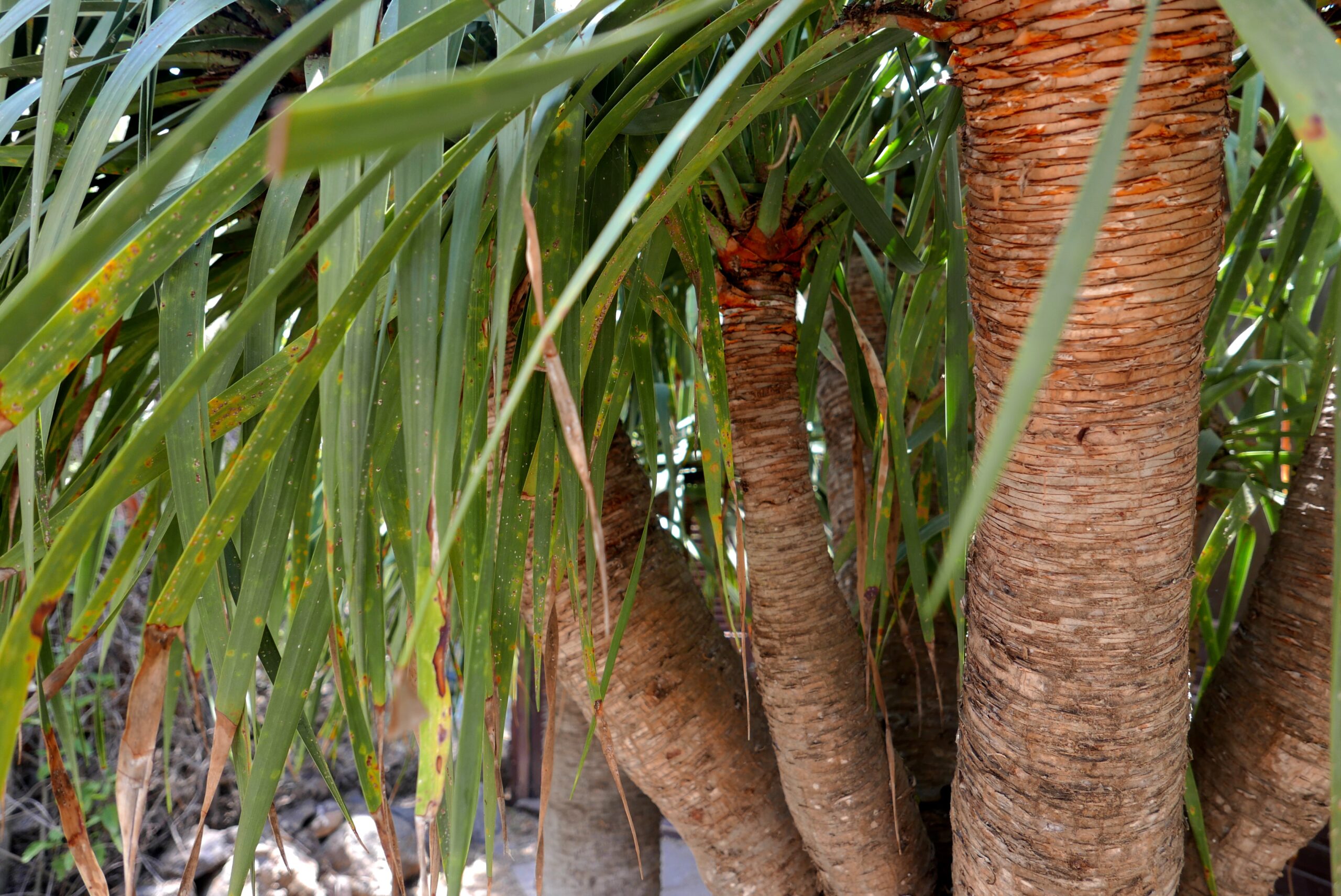El jardín formó parte de un antiguo palmeral. Los majos (la civilización prehispánica de Lanzarote y Fuerteventura) de Haría apreciaban enormemente el palmero canario utilizándolo para todo, desde vivienda hasta vestimenta, y para alimentar a las cabras con sus frondas, cuyo estiércol se usaba para el cultivo y la alimentación.
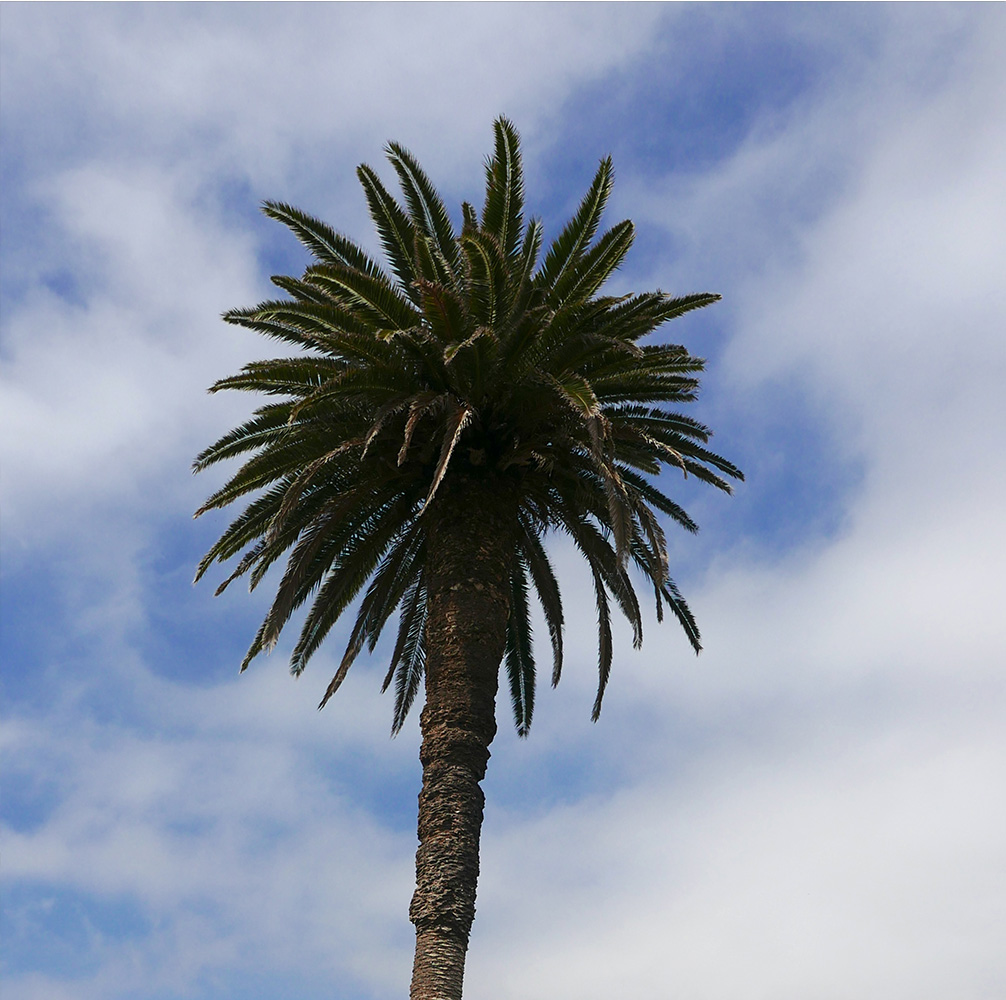
Mi proyecto para restaurar el bosque nuboso en los acantilados sobre Haría involucra dos especies nativas principales: el olivo silvestre local, acebuche, así como el lentisco. Ambas especies lucharon por crecer más allá de un metro aproximadamente hasta que apareció un cortavientos de la resistente Tamarix canariensis se había desarrollado. Este árbol tiene hojas saladas y produce flores encantadoras (abajo).
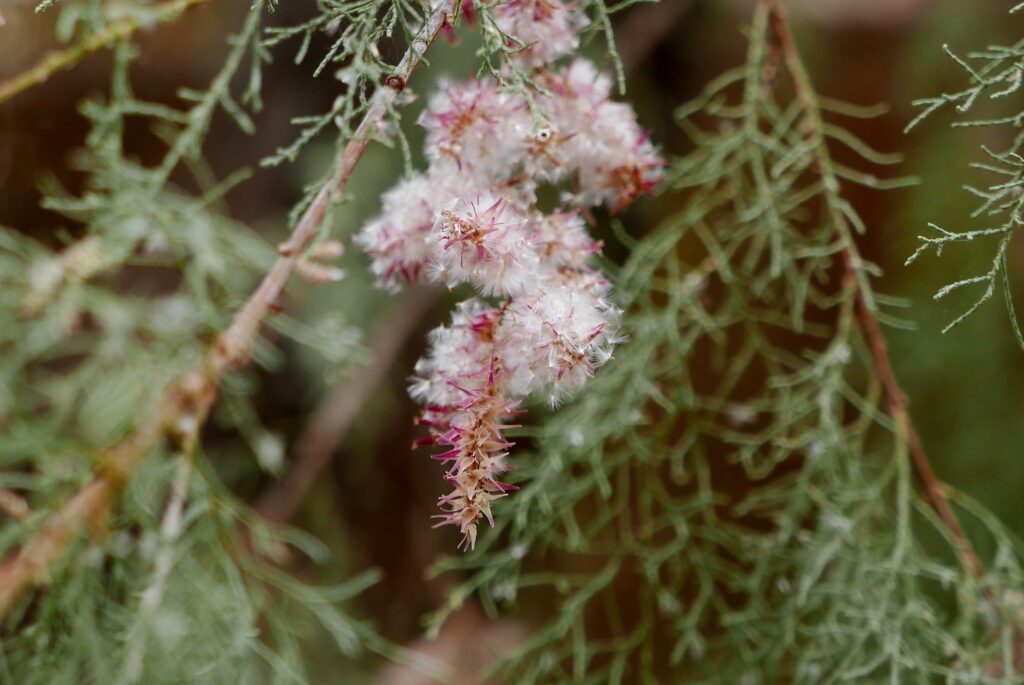
El acebuche no produce frutos útiles, pero como los olivares de Italia están siendo devastados por enfermedades, tal vez estos parientes silvestres puedan contener un gen resistente que pueda añadirse a las variedades cultivadas. El lentisco (abajo) ha madurado hasta convertirse en un hermoso árbol, que proporciona la sombra muy necesaria en el jardín.
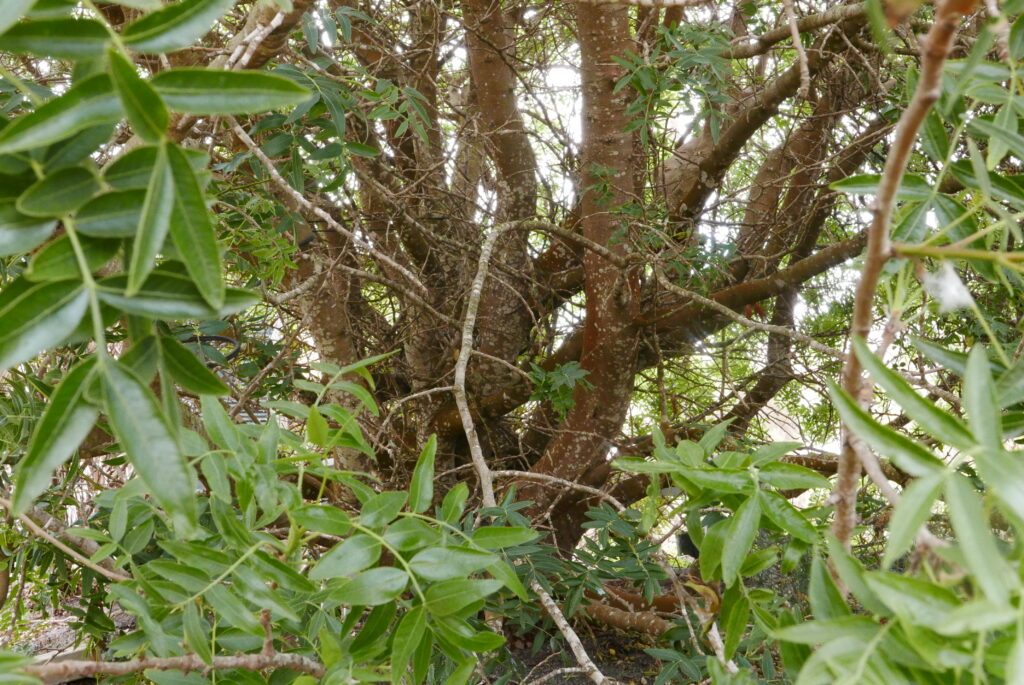
Aunque no es nativo de Lanzarote, nos encanta el árbol drago y probablemente hemos plantado demasiados! Normalmente no regamos el jardín, pero el árbol de abajo fue trasplantado hace poco y necesitaba ayuda.

Cerca de la casa hay algunos pinos canarios que forman los magníficos bosques de Tenerife, pero no son autóctonos de Lanzarote. Tienen la peculiar costumbre de desarrollar nuevos brotes en la parte inferior de sus troncos.
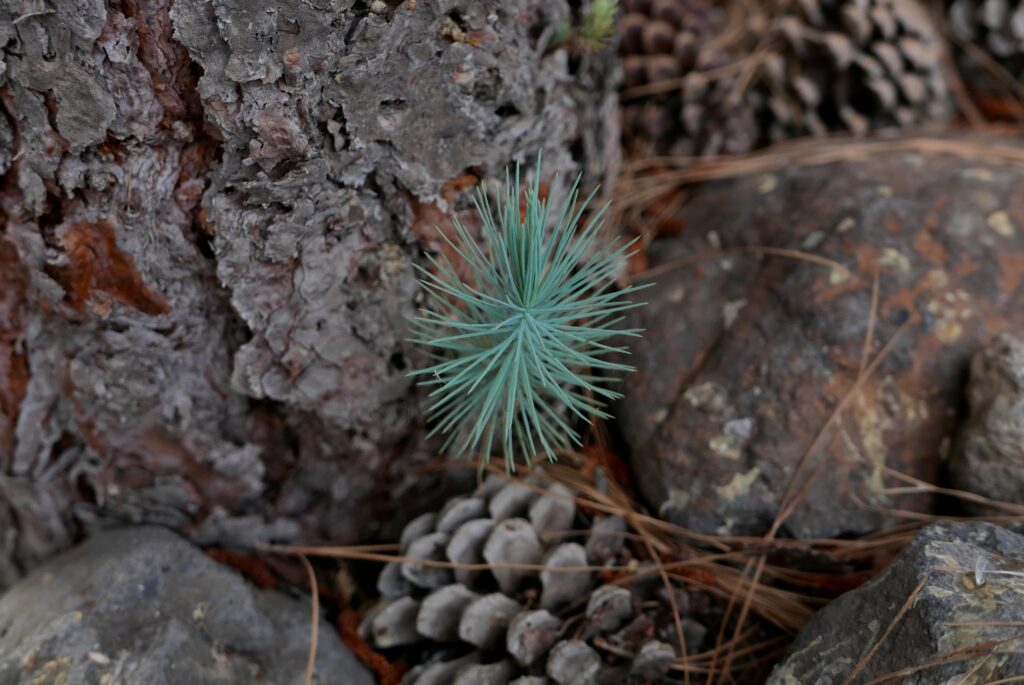
Los únicos otros árboles no autóctonos son especies de Prosopis, nativas del desierto de Atacama en Chile, donde sobreviven años sin lluvia absorbiendo la humedad atmosférica a través de sus hojas; el aire húmedo, a veces brumoso, de aquí les sienta perfectamente. Están situados alrededor de la pérgola y el estanque de las ranas. Cerca del estanque de las ranas hay un olivo cultivado que solo ha dado fruto una vez después de una tormenta, pero está ahí para compararlo con el olivo silvestre canario que está a su lado.
